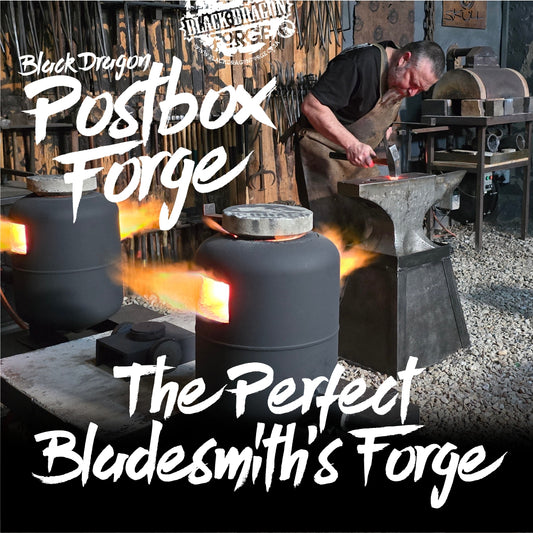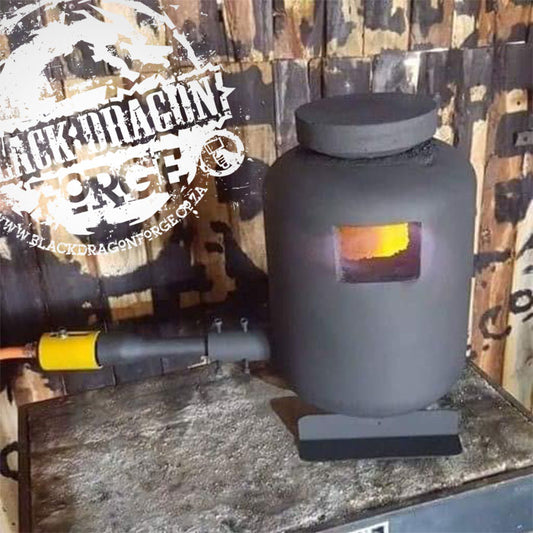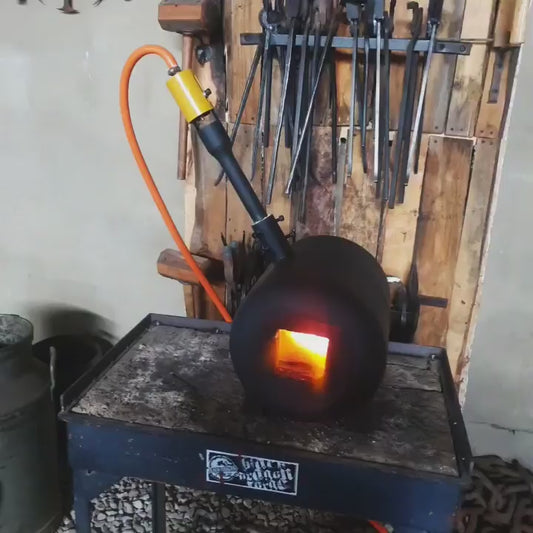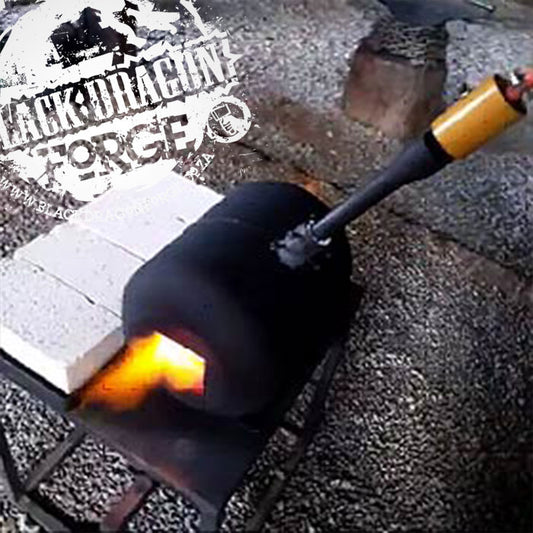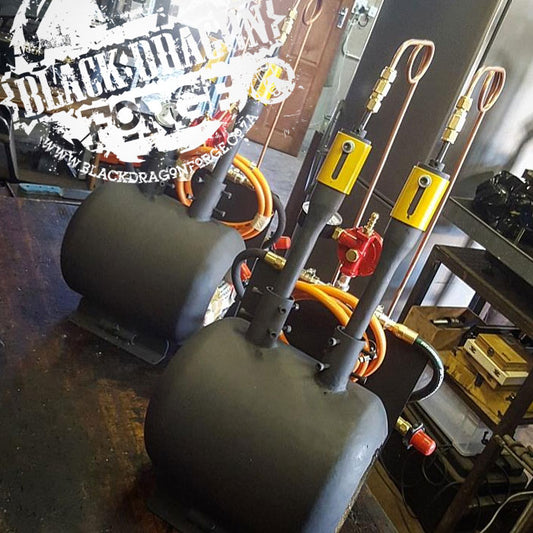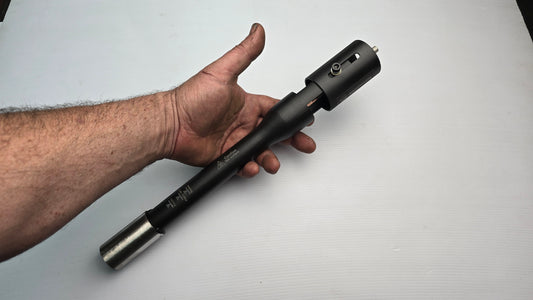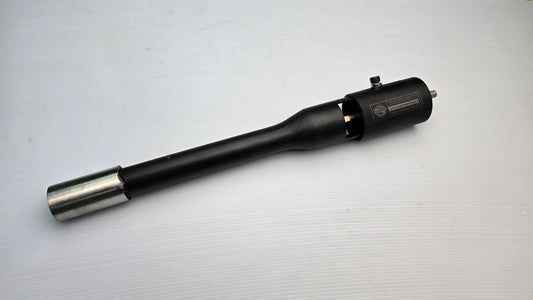
Understanding Your Customers' Needs as a Knifemaker by Seeking Feedback
Neels Van Den BergAs a knifemaker, your ultimate goal is to create products that not only meet but exceed your customers' expectations. To achieve this, it's crucial to understand their needs, preferences, and pain points. One effective way to gain valuable insights is by seeking feedback directly from your customers. In this article, we will explore the importance of customer feedback, different methods to collect it, and how to leverage this information to enhance your knifemaking business. Let's dive in!
Why Customer Feedback Matters
Understanding customer expectations
Your customers' needs and expectations should be at the forefront of your knifemaking business. By seeking feedback, you can gain a deeper understanding of what they value in a knife, what features they prioritize, and what improvements they desire. Customer feedback provides invaluable insights into the minds of your target audience, allowing you to align your products with their expectations.
Identifying areas for improvement
No matter how skilled you are as a knifemaker, there is always room for improvement. Customer feedback acts as a guiding compass, highlighting areas where you can enhance your products, processes, and overall customer experience. It helps you pinpoint any weaknesses or pain points that may be hindering customer satisfaction, giving you the opportunity to address them effectively.
Methods to Collect Customer Feedback
Surveys and questionnaires
Surveys and questionnaires are a popular and effective way to collect customer feedback. You can create online surveys using platforms like Google Forms or SurveyMonkey, or distribute printed questionnaires at your physical store or events. Make sure to ask a mix of closed-ended and open-ended questions to gather both quantitative and qualitative data.
Online reviews and testimonials
Monitoring online reviews and testimonials is crucial in the digital age. Encourage your customers to share their experiences on platforms such as your website, social media, or review sites like Yelp. Positive reviews not only serve as testimonials but also attract potential customers. Pay attention to negative reviews as well, as they provide valuable insights for improvement.
Social media engagement
Engaging with your customers on social media platforms like Instagram, Facebook, or Twitter opens up a direct line of communication. Encourage discussions, respond to comments and direct messages promptly, and ask specific questions to gather feedback. Social media can be a powerful tool to connect with your customers on a personal level.
Personal interviews and focus groups
In addition to online methods, consider conducting personal interviews or focus groups. This approach allows for in-depth conversations and provides a more holistic understanding of your customers' needs and preferences. You can either conduct these interviews in person or through video calls for remote participants.
Crafting Effective Feedback Surveys
Choosing the right questions
When creating feedback surveys, it's important to choose questions that are clear, concise, and relevant. Ask about specific aspects of your knives, such as design, materials, functionality, and pricing. Use rating scales, multiple-choice, and open-ended questions to capture a wide range of feedback.
Structuring surveys for maximum insights
To maximize the insights you gather from surveys, consider the order and flow of the questions. Start with general questions to ease respondents into the survey, then delve into more specific aspects. Group related questions together to maintain coherence and ensure respondents' focus. End the survey with a section for additional comments or suggestions.
Analyzing and Interpreting Customer Feedback
Identifying patterns and trends
Once you've collected a substantial amount of feedback, it's time to analyze and interpret the data. Look for patterns and trends that emerge from the responses. Are there consistent preferences or common areas for improvement? Use data visualization tools, such as charts or graphs, to make it easier to identify and understand these patterns.
Prioritizing feedback for action
Not all feedback will carry the same weight or require immediate action. Prioritize the feedback based on its impact on customer satisfaction and your ability to implement changes. Focus on areas that will make the most significant difference to your customers' experience and align with your overall business goals.
Implementing Changes Based on Feedback
Incorporating customer suggestions
When implementing changes based on customer feedback, it's essential to communicate and involve your customers in the process. Let them know their opinions were heard and show how their suggestions influenced your decisions. By incorporating their ideas, you demonstrate your commitment to continuously improving your products and services.
Iterative product development
Customer feedback should drive an iterative approach to product development. Use the insights gained to refine existing knife models, introduce new features, or even develop entirely new designs. By involving your customers in this process, you create a sense of ownership and ensure your products evolve to meet their changing needs.
Building Customer Relationships Through Feedback
Demonstrating responsiveness
When customers provide feedback, they expect to be heard and acknowledged. Respond to their feedback promptly and professionally, whether it's through direct messages, emails, or public responses on social media. Show them that their opinions matter and that you are actively working to address their concerns.
Engaging customers in the process
Consider involving your customers in decision-making processes, such as voting on new designs or participating in focus groups. By including them, you foster a sense of community and make them feel like valued contributors to your knifemaking journey. This engagement can lead to stronger customer loyalty and advocacy.
Monitoring Competitor Feedback
Learning from competitor strengths and weaknesses
While focusing on your own customers' needs is crucial, it's also beneficial to keep an eye on your competitors. Monitor their customer feedback and reviews to gain insights into their strengths and weaknesses. This information can guide your own improvements and help you differentiate yourself in the market.
Gaining a competitive edge
By leveraging competitor feedback, you can identify gaps in the market and find opportunities to stand out. Look for recurring customer complaints or unmet needs that your competitors may not be addressing effectively. By filling these gaps, you can gain a competitive edge and attract customers who are looking for better alternatives.
Common Challenges and How to Overcome Them
Dealing with negative feedback
Negative feedback is inevitable, but it presents an opportunity for growth. Instead of becoming defensive or dismissive, embrace criticism as a chance to improve. Respond to negative feedback in a positive and empathetic manner, addressing the concerns raised and offering solutions or alternatives. Turn negative experiences into positive outcomes.
Overcoming survey fatigue
Survey fatigue can be a challenge when collecting customer feedback. To combat this, keep your surveys concise and focused. Avoid asking repetitive or irrelevant questions. Consider offering incentives, such as discounts or giveaways, to encourage participation. Additionally, vary your feedback collection methods to prevent customers from feeling overwhelmed.
Leveraging Feedback for Marketing and Growth
Showcasing customer satisfaction
Positive feedback can serve as powerful marketing material. Share testimonials, reviews, and success stories on your website, social media platforms, and marketing campaigns. Highlighting your customers' satisfaction and positive experiences will build trust and attract new customers who value quality craftsmanship.
Targeted marketing campaigns
Use the insights gained from customer feedback to refine your marketing campaigns. Tailor your messaging to address the pain points or desires expressed by your customers. Highlight the unique features of your knives that align with their preferences. By targeting your marketing efforts effectively, you can attract customers who are most likely to convert.
Conclusion
Seeking feedback from your customers is an essential practice for any knifemaker who aims to deliver exceptional products and experiences. By understanding your customers' needs, preferences, and pain points, you can continually improve your knifemaking business and forge stronger relationships with your customers. Embrace feedback as a tool for growth, and let your customers be the guiding force behind your success.
Frequently Asked Questions (FAQs)
1. How often should I seek customer feedback? Regularly seeking customer feedback is important to stay in tune with their evolving needs. Aim to collect feedback at key touchpoints, such as after a purchase, upon delivery, or during product trials.
2. How should I handle conflicting customer feedback? Conflicting feedback is not uncommon, as different customers may have varying preferences. Assess the overall trends and prioritize changes that benefit the majority while considering if specific requests align with your business goals.
3. Can I use customer feedback to justify price increases? Yes, customer feedback can provide valuable insights into the perceived value of your knives. If customers consistently praise the quality and features, it can help justify higher prices.
4. Should I respond to every customer feedback, even the positive ones? While responding to negative feedback is crucial, responding to positive feedback is equally important. It shows appreciation for their support and encourages customers to continue advocating for your brand.
5. How can I encourage more customers to provide feedback? Make it easy for customers to provide feedback by offering multiple channels and incentivizing participation. Additionally, highlight how customer feedback contributes to product improvement, emphasizing their role in shaping your offerings.
Customer Feedback Questionnaire
Below is an extensive customer questionnaire that covers various aspects discussed in the article. It includes example answers to help illustrate the type of responses you may receive. Remember to customize and adapt the questionnaire to fit your specific knifemaking business and target audience.
Section 1: Understanding Customer Expectations
-
What factors influenced your decision to purchase our knives?
- Example answer: I was drawn to the high-quality materials and craftsmanship.
-
Which features of our knives do you value the most?
- Example answer: The ergonomic handle design and razor-sharp blade.
-
How would you describe your ideal knife for your specific needs?
- Example answer: A versatile chef's knife that offers precise control and durability.
Section 2: Identifying Areas for Improvement
-
Are there any aspects of our knives that you feel could be improved? If so, please specify.
- Example answer: The blade could have better edge retention.
-
Have you encountered any difficulties or challenges while using our knives? Please describe.
- Example answer: The handle can sometimes feel slippery when wet.
-
Are there any additional features or functionalities you would like to see in our knives?
- Example answer: A built-in blade sharpener would be convenient.
Section 3: Feedback Collection Methods
-
How likely are you to participate in a brief online survey about our knives?
- Example answer: I'm very likely to participate.
-
Do you feel comfortable sharing your experiences and feedback on social media platforms?
- Example answer: Yes, I'm happy to share my positive experiences on social media.
-
Would you be interested in participating in a personal interview or focus group to provide more in-depth feedback?
- Example answer: Yes, I would be interested in participating to share detailed insights.
Section 4: Craft Effective Feedback Surveys
-
On a scale of 1-10, how satisfied are you with the overall quality of our knives?
- Example answer: 9
-
Which specific aspect of our knives do you believe needs improvement the most?
- Example answer: The handle design could be more ergonomic.
-
Please rate the following features of our knives based on their importance to you (1 = Not important, 10 = Very important):
- Design: 8
- Sharpness: 10
- Durability: 9
- Price: 7
Section 5: Analyzing and Interpreting Customer Feedback
-
Are there any recurring themes or patterns in our knives' performance that you've noticed?
- Example answer: Some customers have mentioned issues with blade sharpness.
-
How would you prioritize the following areas for improvement? (Rank from 1 to 4, with 1 being the highest priority)
- Blade sharpness: 1
- Handle comfort: 3
- Weight balance: 2
- Packaging: 4
Section 6: Implementing Changes Based on Feedback
-
How would you feel if we incorporated your suggestions into future knife designs?
- Example answer: I would be thrilled to know my feedback contributes to improving your knives.
-
Would you be interested in participating in a beta testing program for new knife models?
- Example answer: Absolutely, I would love to be involved in testing new models.
Section 7: Building Customer Relationships Through Feedback
-
How satisfied are you with our responsiveness to your feedback or inquiries?
- Example answer: I'm extremely satisfied with your prompt and helpful responses.
-
Would you like to be part of a customer advisory panel to provide ongoing feedback and suggestions?
- Example answer: Yes, I would be honored to be part of a panel to help shape your products.
Section 8: Monitoring Competitor Feedback
-
Have you ever tried knives from our competitors? If so, please share your experiences and comparisons.
- Example answer: Yes, I found our competitor's knives to be less durable compared to yours.
-
Is there any particular competitor that you believe excels in certain aspects of knife production?
- Example answer: Competitor X has excellent blade sharpness but lacks in handle comfort.
Remember, this is just a template to get you started. Customize the questions to align with your specific goals and the information you seek from your customers. Use a mix of closed-ended (rating scales, multiple-choice) and open-ended questions to gather both quantitative and qualitative feedback.
Note: The example answers provided are for illustration purposes only and may not reflect actual customer responses.

